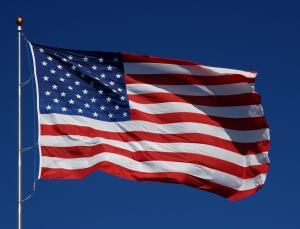
The Federal Reserve ended weeks of speculation Thursday by keeping U.S. interest rates at record lows in the face of threats from a weak global economy, persistently low inflation and unstable financial markets.
But at a news conference after a Fed policy meeting, Chair Janet Yellen said a rate hike was still likely this year. A majority of Fed officials on the committee that sets the federal funds rate — which controls the interest that banks charge each other — foresee higher rates before next year. The Fed will next meet in October and then in December.
“Every (Fed) meeting is a live meeting,” Yellen said. “October, it remains a possibility.”
In maintaining its policy, the Fed is keeping its benchmark short-term rate near zero, where it’s been since the depths of the 2008 financial crisis. A higher Fed rate would eventually send rates up on many consumer and business loans.
The ultra-low loan rates the Fed engineered were intended to help the economy recover from the Great Recession. Since then, the economy has nearly fully recovered even as pressures from abroad appear to have grown.
In a statement it issued after its meeting ended, the Fed that while the U.S. job market is solid, global pressures may “restrain economic activity” and further slow inflation.
Signs of a sharp slowdown in China, the world’s second-largest economy, and other emerging economies have intensified fear about the U.S. and global economy. And low oil prices and a high-priced dollar have kept inflation undesirably low.
“We’re focused particularly on China and emerging markets,” Yellen said at her news conference. “We’ve long expected, as most analysts have, to see some slowing in Chinese growth over time as they rebalance their economy. The question is whether or not there might be a risk of a more abrupt slowdown than most analysts expect.”
China’s economy has slowed for four straight years — from 10.6% in 2010 to 7.4% last year. The International Monetary Fund expects the Chinese economy to grow just 6.8% this year, slowest since 1990.
Stocks ended mostly lower after a volatile day as traders tried to decide on the path of interest rates. The Dow Jones industrial average ended down 65 points, or 0.4%. It had rallied shortly after the Fed’s statement came out, then drifted lower. But bond prices rose, sending yields lower, as traders reacted to the Fed’s prediction that inflation will remain subdued.
Financial markets had been zigzagging with anxiety as investors tried to divine whether the Fed would start phasing out the period of extraordinarily low borrowing rates it launched at a time of crisis.
At her news conference, Yellen stressed that even after the first increase from zero, interest rate policy will be “highly accommodative for quite some time.” She has stressed that any rate increases will likely be modest and gradual.
The Fed’s action Thursday was approved on a 9-1 vote, with Jeffrey Lacker casting the first dissenting vote this year. Lacker, president of the Fed’s Atlanta regional bank, had pushed for the Fed to begin raising rates by moving the federal funds rate up by a quarter-point.
Instead, the Fed retained language it has been using that it will be appropriate to raise interest rates when it sees “some further improvement in the labour market” and is “reasonably confident” that inflation will move back to the Fed’s optimal inflation target of 2%.
The Fed’s preferred measure of inflation was up just 1.2% in the latest reading and has been below 2% for more than three years.
In an updated economic forecast, 13 of the 17 Fed policymakers said they see the first rate hike occurring this year. In June, 15 Fed officials had predicted that the first rate hike would occur this year.
The new forecast significantly lowered the expectation for inflation this year to show the Fed’s preferred inflation gauge rising just 0.4%, down from a 0.7% forecast in June. The change takes into account the further rise in the value of the dollar, which makes imports cheaper, and a recent drop in oil prices. The Fed’s forecast still foresees inflation accelerating to a 1.7% increase next year, still below its 2% target.
The new forecast has unemployment dropping to 5% by the end of this year, down from 5.3% in June. The unemployment rate in August dropped to a seven-year low of 5.1%.
The anxiety that gripped investors before Thursday’s decision stemmed in part from concern that once the Fed starts raising its key rate, other rates — for mortgages, car loans, business borrowing — will eventually rise. Some fear the economy might suffer.
Yet the Fed’s influence on many consumer and business rates is only indirect. In the short run at least, those rates could continue to stay low, held down by low inflation globally and by a flow of money into U.S Treasurys.